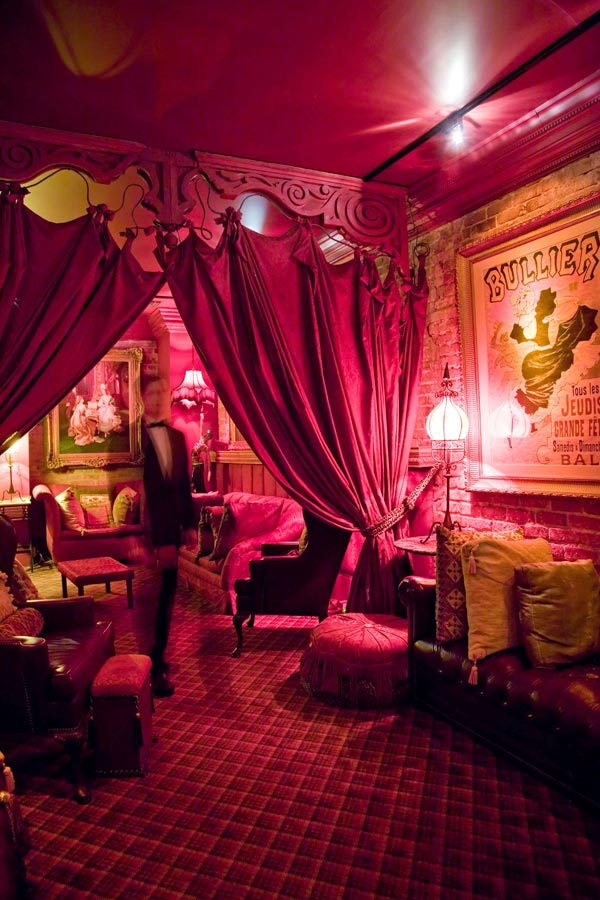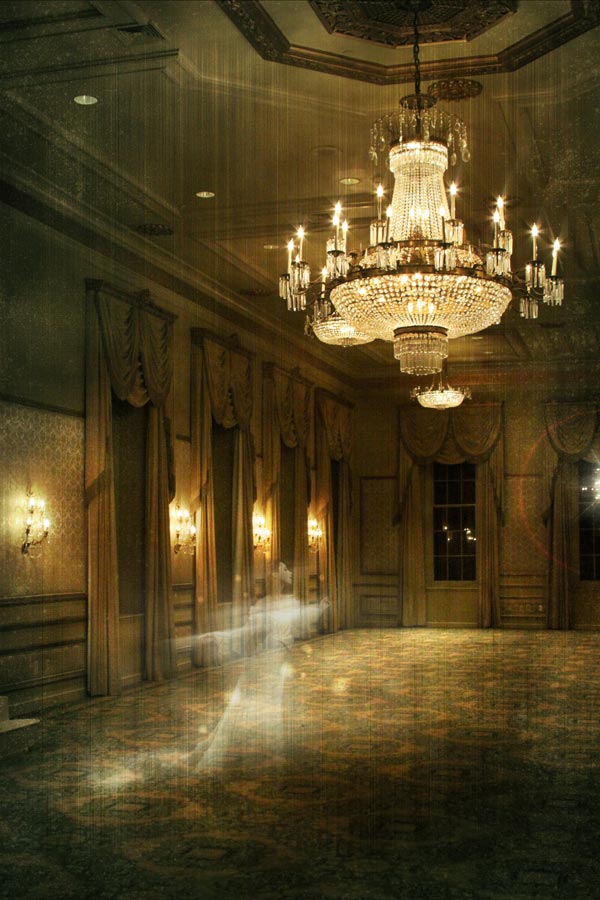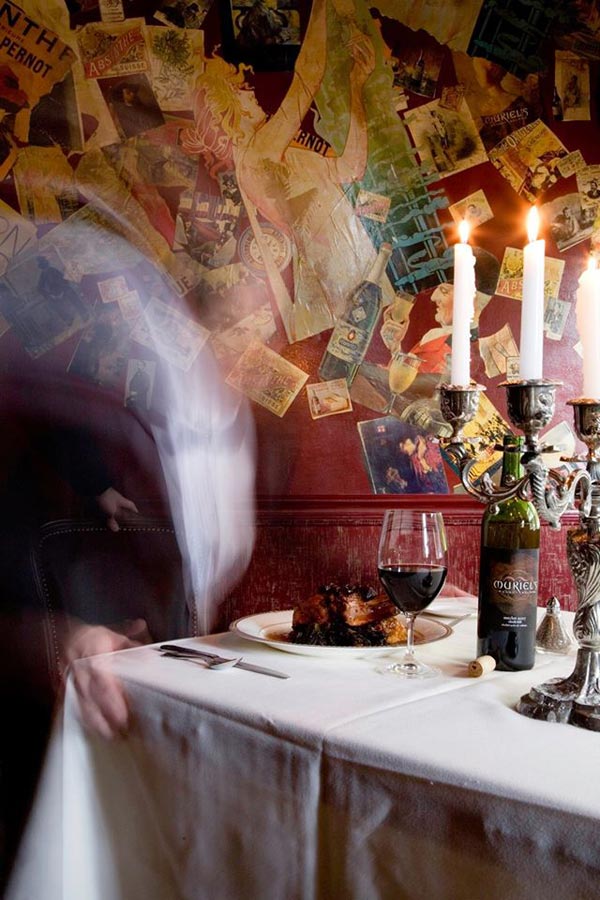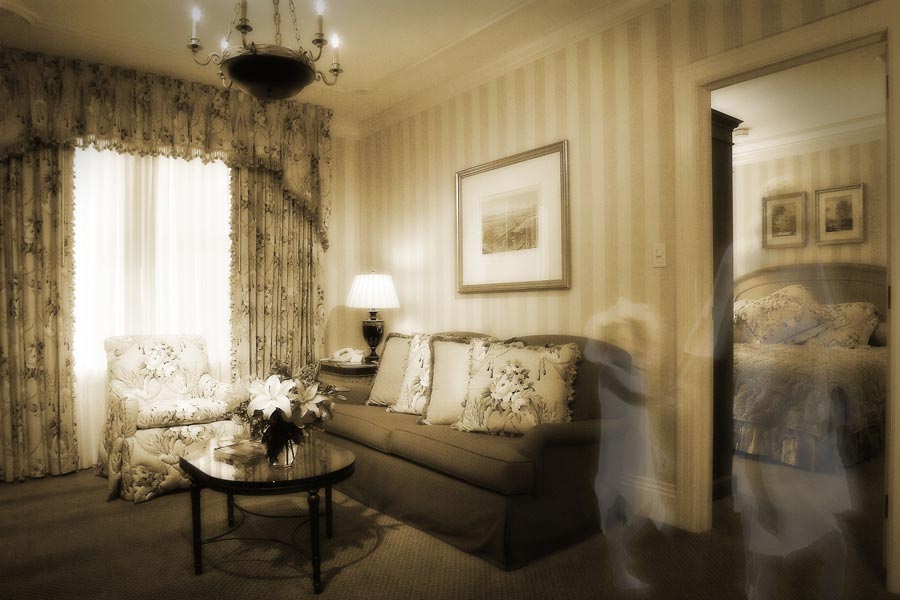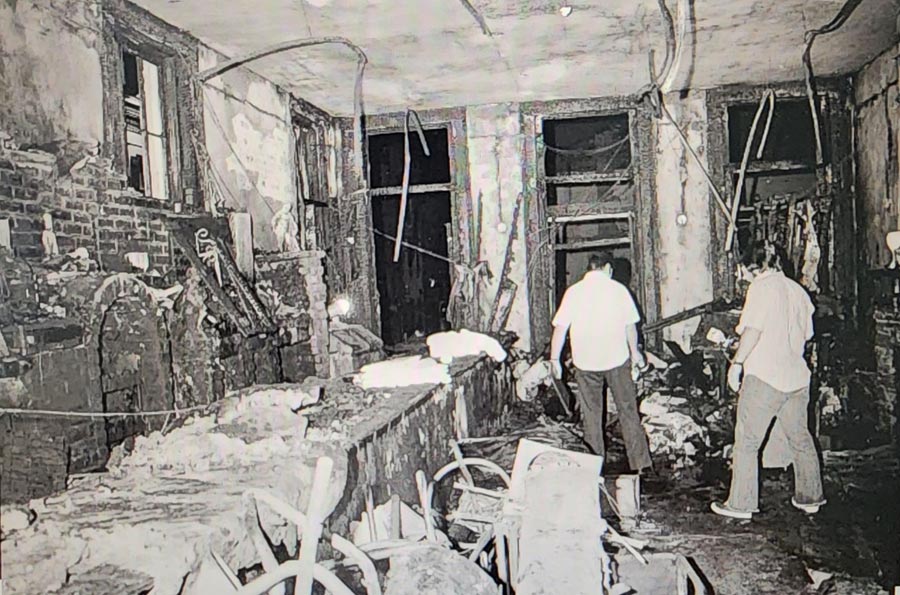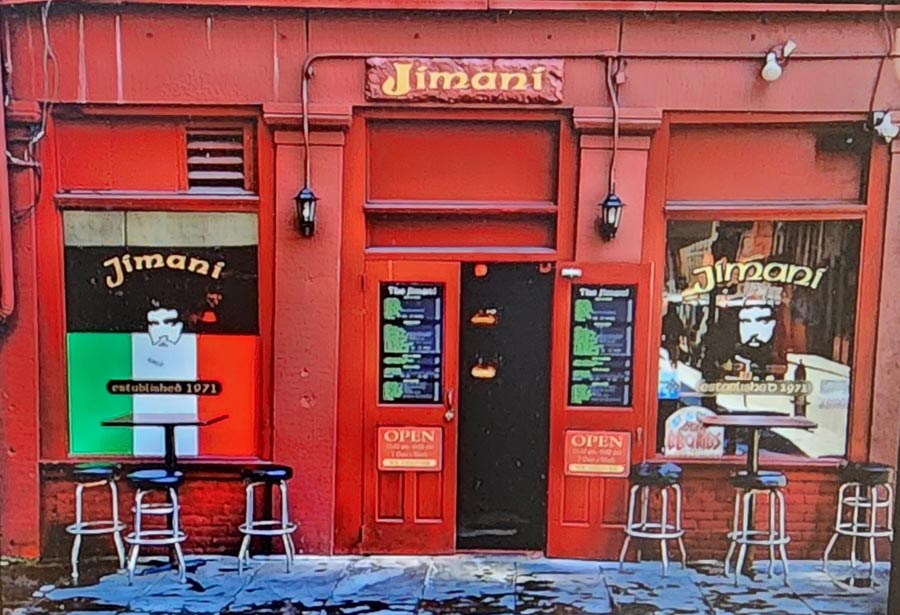August 23, 2023
Since New Orleans was founded in 1718, the city has always had an allure or mystique surrounding it. From its development by the French through its period of Spanish control, then briefly back to the French before being acquired by the United States with the Louisiana Purchase, the Crescent City has indeed become a kaleidoscope of stories, folklore and legends. Even before it was founded as a city, the Big Easy which was then known as Bulbancha ("place of many tongues” in Choctaw) was an important trading hub by the Native Americans. Add to this New Orleans’ rich African American culture and you truly have a city with volumes of tales to tell.
As you can imagine, many of our stories focus on things that go bump in the night or send shivers down your spine. Even in novels and movies, our city has been portrayed as a haven for vampires, witches and ghosts. As our temperature cools and we enter the spooky season, let’s delve into some of our more famous ghost stories as well as look at some of our most haunted spots around town.
All good ghost stories have at least a modicum of fact—or so people say. In the case of one of the most notable haunted houses in NOLA, the LaLaurie Mansion, horrible things did indeed happen in the early 1830s at the corner of Royal and Governor Nichols Streets. How did this beautiful home become so infamous that it was recently portrayed in American Horror Story, with Kathy Bates as Madame LaLaurie? On Apr. 10, 1834, a fire broke out in the LaLaurie residence on Royal Street, starting in the kitchen. It was started by a 70-year-old enslaved woman who LaLaurie had chained to the stove. She told the police and fire marshals she was trying to commit suicide for fear of being punished—banished to the attic to never return. The following day, bystanders responding to the fire attempted to enter the quarters of those enslaved to ensure that everyone had been evacuated. Upon being refused the keys by the LaLauries, the bystanders broke down the doors to the quarters and found several slaves horribly mutilated and brutalized for months. Before the fire, there was already a record of 12 slave deaths at the mansion. When the discovery of the abused slaves became widely known, a mob of local citizens attacked the LaLaurie residence and destroyed everything. LaLaurie escaped into the night boarding a schooner bound for Mobile, Alabama and then to Paris. She never came back to New Orleans. It is said the souls of the tortured slaves are still present in the house. This house was even more famous in the last few years, when actor Nicolas Cage purchased the property, though he’s since sold it.
Nothing is more terrifying than the story of the Axeman of New Orleans, a serial killer who terrorized the city in the early 1900s and was never apprehended. The Axeman was never identified and the murders remain unsolved. He mainly targeted Italian immigrants and Italian–Americans which raises the possibility that the killings were racially motivated, but as with many things, we can’t be sure. The Axeman would sneak into bedrooms at night and use an axe that he would find on the victim’s property. This is the stuff of nightmares: waking up to a person standing over your bed, axe raised high. He even taunted the police with a letter: “I am very fond of jazz music, and I swear by all the devils in the nether regions that every person shall be spared in whose home a jazz band is in full swing at the time I have just mentioned. If everyone has a jazz band going, well, then, so much the better for you people. One thing is certain and that is that some of your people who do not jazz it out on that specific Tuesday night (if there be any) will get the axe.” Within a week, every jazz musician in the city was employed by citizens fearing for their lives. Legend has it that the Axeman still roams the streets of New Orleans in search of fresh victims.
Not all our eerie stories are mired in the past. In fact, our next story of love gone wrong is very recent, having taken place within the last twenty years. This true tale is the love story of Zack and Addie that took a very gruesome and tragic turn. Zack Bowen and Addie Hall were transplants to New Orleans, lured to the city by its bohemian culture. Addie was a poet, artist, dancer and French Quarter bartender at Buffa’s with a lot of friends. Zack was a charismatic, charming, and good-looking young man who came to New Orleans after his wife Lana took their two kids and left him. He was in the military and did tours overseas in Iraq and Kosovo. Zack suffered from severe PTSD that went basically unchecked. These young people met while bartending in the French Quarter. Friends say they had a tumultuous relationship from the start, fueled by drugs and alcohol. Then Hurricane Katrina struck, and they became inseparable as they rode out the storm in the city. Their adventure during the hurricane thrust them in the media spotlight as several local and national magazines used their story and photos in their publications. But as the city recovered after Katrina, Zach and Addie’s relationship soured. Their number of fights increased, growing more violent with time.
Then in the early hours of Thursday, Oct. 5, 2006, Zack strangled Addie Hall to death in a drunken stupor and fell asleep next to her corpse, committed necrophilia, and got up the next day and went to work. Over the next several days, Zack cut up Addie’s body in their bathtub with a hacksaw and knife and dispersed the pieces of her corpse into and on top of the stove for cooking, as well as in the refrigerator. His intentions were to separate bone from flesh to more easily dispose of her body. Addie’s friends became worried when she did not show up for work and none of them heard from her. Zack said she had left town, but they grew suspicious and notified the police. On Oct. 17, nearly two weeks after the murder and dismemberment, detectives went to see Zack where he worked as a bartender at the rooftop pool bar of the Omni Royal Orleans Hotel. Here, he committed his final act of violence: committing suicide by jumping off the rooftop. In his back pocket was a handwritten note and his army dog tags inside of a plastic bag, and the keys to Addie’s apartment in his front pocket. Having confessed to his crimes in his final act of death, Zack led the police to the gory crime scene located at 826 N. Rampart St. The story goes that Zack’s ghost still haunts the rooftop of the Omni Royal Orleans and Addie’s spirit is still trapped in the apartment, now owned by a Voodoo priestess who has turned it into a museum of the paranormal with tours of the apartment.
There are so many haunted places in the French Quarter; the Omni Royal Hotel is just one of them. Another haunted hotel is the Hotel Monteleone. In 1880, Antonio Monteleone left Sicily and made his way to New Orleans. When he arrived, he purchased a cobbler shop on Royal Street. In 1886, he purchased a 64-room hotel. Over the years, this five-generation, family-owned and operated hotel has grown to one of the most historic and gorgeous hotels in the city, boasting 570 guest rooms and one of the most famous bars in the city: the Carousel Lounge. The hotel’s playful ghost is that of a young boy named Maurice Bergere. Guests and staff have experienced doors that open on their own, elevators that go to the wrong floor and fleeting glances of a young child out of the corner of their eye. It seems little Maurice still likes to play pranks on the 14th floor, which is actually the 13th floor. In the 1800s, Maurice’s parents Josephine and Jacques were frequent guests of the Hotel Monteleone. They would bring Maurice with them and when they went out at night, they would leave him with a nanny. One night when his parents were out, Maurice fell gravely ill and he passed away that night. When the Begeres returned from the opera, they were horrified to find that their son was dead.
Ever since his death, Josephine made her husband bring her back to the Hotel Monteleone so that she could hopefully come in contact with her dead son’s spirit. She apparently did when the ghost of Maurice appeared to her in the dead of night and assured her. "Mommy, don’t cry. I’m fine.” With both his parents long since gone, it seems Maurice still haunts the room, halls and elevator of the hotel. People have heard child-like laughter and felt cold spots, but most of the activity seems to in and around the 14th floor. You can even rent the room where Maurice died for those brave enough.
The city’s fabulous restaurants are not immune from the spirit world. It seems world-famous Arnaud’s Restaurant, founded in 1918, has a spooky diner. Even though Count Arnaud passed away in 1948, he still supposedly haunts the famous eatery. Count Arnaud can be seen in the corners of the restaurant, tucked out of the way, keeping a watchful eye. According to sources, he prefers to stand at the far-left corner of the main dining room when things are really busy. His ghost appears as a tall man with a mustache and a tuxedo like a normal staff member. The Count has been known to rearrange tables, chairs, silverware, and furniture if it isn’t up to his standards. The ghost of Germaine Wells, the Count’s daughter, has also been seen hanging around Arnald’s. As queen of the most Mardi Gras Balls in the city and founder of the Germaine Wells Easter Parade, she was a larger-than-life personality, so it seems only fitting that the spirit plane would not be enough to hold her. She is more commonly seen floating around the Mardi Gras Museum. The Richelieu Bar which was once an opium den was one of the many buildings bought by the Count to expand his restaurant. Many people claim that temperatures in the bar are known to drop dramatically at random apparently from unhappy the spirits of opium addicts who are angry at the loss of their favorite drug house.
Other eerie dinner guests can be found at Brennan’s with the ghost of staff members who have passed on. Chef Paul Blangé whose most notable contribution was the dessert Bananas Foster. Blangé created the dish in 1951, and it remains the most-ordered item at the restaurant. Staffers says that despite his death in 1977, he never left the kitchen. Every night, Blangé’s ghost signals the end of the night shift by banging pots and pans. This nightly noise is unlikely to be the work of a prankster in the kitchen, as the sound is heard while the restaurant’s doors are being locked from the outside. According to the stories, the best way to summon Blangé’s ghost is to order Bananas Foster. While the bananas are aflame at your table, the chef’s translucent ghost may appear. Another staff member, Herman Funk, was a sommelier who helped form the restaurant’s extraordinary selection of wine and spirits. Now, Funk lives on in the wine cellar and helps waitstaff decide on wine selections by clinking his preferred bottles.
A more unfriendly spirit can be found in the Red Room at Muriel’s Restaurant. According to legend, Monsieur LeFleur calmly planned three funerals. Later that day, he came home. He killed his wife and son. He then killed himself by hanging himself from the chandelier in the center of the Red Room. Guests and staff have felt cold spots and the portrait of Monsieur LeFleur has appeared to change its expression.
In 2001, Muriel’s Restaurant opened its doors introducing the public to the delicious cuisine of this amazing restaurant and the several ghosts that haunt the venue. Pierre Antoine Lepardi Jourdan lived in the home in the early 1800s and loved the house immensely. But alas, in all three stories, he had a gambling problem. In 1814, he bet the house—literally—in a game of poker and lost. Rather than forfeit his home, he made a final decision and committed suicide.
His ghost spends most of his time on the second floor, but has been seen in other parts of the restaurant. Other spectral entities in the space include ghostly servants who break glassware to let off steam from the frustration of their eternal servitude. They even have a séance room in the restaurant where guests can visit and enjoy a cocktail with the spirits. The ownership of Muriel’s keeps a table permanently reserved for Jourdan’s ghost, complete with bread and red wine. The restaurant sets his table every day.
In New Orleans we serve spirits with spirits at some our more haunted bars. One bar, Jimani, is a great example. Patrons often tell of whispers in their ear and nobody behind them, inexplicable icy chills, and faint smells of burning hair and charred flesh. In 1973, the bar was part of the UpStairs Lounge, an LGBTQ+ bar that doubled as a church congregation’s meeting place. On June 24, just before 8 p.m., a buzzer sounded in the UpStairs Lounge. When a patron opened the door they were greeted by fire and the smell of lighter fluid. Having a new source of oxygen, the blaze exploded into the lounge. 32 people died in this inferno, but what was worse than the fire itself was the indifference of the police and fire departments at the time. Some bodies remained unclaimed, their families too ashamed to admit to having a gay son. The spirits haunting the bar are the victims who died in the blaze who feel forgotten and abandoned.
Those scary stories are just a few reasons to keep you up at night. New Orleans, and particularly the French Quarter, has many more tales of terror and mystery. That being said, remember to tell yourself: “It is just a story.” Or is it?
As you can imagine, many of our stories focus on things that go bump in the night or send shivers down your spine. Even in novels and movies, our city has been portrayed as a haven for vampires, witches and ghosts. As our temperature cools and we enter the spooky season, let’s delve into some of our more famous ghost stories as well as look at some of our most haunted spots around town.
All good ghost stories have at least a modicum of fact—or so people say. In the case of one of the most notable haunted houses in NOLA, the LaLaurie Mansion, horrible things did indeed happen in the early 1830s at the corner of Royal and Governor Nichols Streets. How did this beautiful home become so infamous that it was recently portrayed in American Horror Story, with Kathy Bates as Madame LaLaurie? On Apr. 10, 1834, a fire broke out in the LaLaurie residence on Royal Street, starting in the kitchen. It was started by a 70-year-old enslaved woman who LaLaurie had chained to the stove. She told the police and fire marshals she was trying to commit suicide for fear of being punished—banished to the attic to never return. The following day, bystanders responding to the fire attempted to enter the quarters of those enslaved to ensure that everyone had been evacuated. Upon being refused the keys by the LaLauries, the bystanders broke down the doors to the quarters and found several slaves horribly mutilated and brutalized for months. Before the fire, there was already a record of 12 slave deaths at the mansion. When the discovery of the abused slaves became widely known, a mob of local citizens attacked the LaLaurie residence and destroyed everything. LaLaurie escaped into the night boarding a schooner bound for Mobile, Alabama and then to Paris. She never came back to New Orleans. It is said the souls of the tortured slaves are still present in the house. This house was even more famous in the last few years, when actor Nicolas Cage purchased the property, though he’s since sold it.
Nothing is more terrifying than the story of the Axeman of New Orleans, a serial killer who terrorized the city in the early 1900s and was never apprehended. The Axeman was never identified and the murders remain unsolved. He mainly targeted Italian immigrants and Italian–Americans which raises the possibility that the killings were racially motivated, but as with many things, we can’t be sure. The Axeman would sneak into bedrooms at night and use an axe that he would find on the victim’s property. This is the stuff of nightmares: waking up to a person standing over your bed, axe raised high. He even taunted the police with a letter: “I am very fond of jazz music, and I swear by all the devils in the nether regions that every person shall be spared in whose home a jazz band is in full swing at the time I have just mentioned. If everyone has a jazz band going, well, then, so much the better for you people. One thing is certain and that is that some of your people who do not jazz it out on that specific Tuesday night (if there be any) will get the axe.” Within a week, every jazz musician in the city was employed by citizens fearing for their lives. Legend has it that the Axeman still roams the streets of New Orleans in search of fresh victims.
Not all our eerie stories are mired in the past. In fact, our next story of love gone wrong is very recent, having taken place within the last twenty years. This true tale is the love story of Zack and Addie that took a very gruesome and tragic turn. Zack Bowen and Addie Hall were transplants to New Orleans, lured to the city by its bohemian culture. Addie was a poet, artist, dancer and French Quarter bartender at Buffa’s with a lot of friends. Zack was a charismatic, charming, and good-looking young man who came to New Orleans after his wife Lana took their two kids and left him. He was in the military and did tours overseas in Iraq and Kosovo. Zack suffered from severe PTSD that went basically unchecked. These young people met while bartending in the French Quarter. Friends say they had a tumultuous relationship from the start, fueled by drugs and alcohol. Then Hurricane Katrina struck, and they became inseparable as they rode out the storm in the city. Their adventure during the hurricane thrust them in the media spotlight as several local and national magazines used their story and photos in their publications. But as the city recovered after Katrina, Zach and Addie’s relationship soured. Their number of fights increased, growing more violent with time.
Then in the early hours of Thursday, Oct. 5, 2006, Zack strangled Addie Hall to death in a drunken stupor and fell asleep next to her corpse, committed necrophilia, and got up the next day and went to work. Over the next several days, Zack cut up Addie’s body in their bathtub with a hacksaw and knife and dispersed the pieces of her corpse into and on top of the stove for cooking, as well as in the refrigerator. His intentions were to separate bone from flesh to more easily dispose of her body. Addie’s friends became worried when she did not show up for work and none of them heard from her. Zack said she had left town, but they grew suspicious and notified the police. On Oct. 17, nearly two weeks after the murder and dismemberment, detectives went to see Zack where he worked as a bartender at the rooftop pool bar of the Omni Royal Orleans Hotel. Here, he committed his final act of violence: committing suicide by jumping off the rooftop. In his back pocket was a handwritten note and his army dog tags inside of a plastic bag, and the keys to Addie’s apartment in his front pocket. Having confessed to his crimes in his final act of death, Zack led the police to the gory crime scene located at 826 N. Rampart St. The story goes that Zack’s ghost still haunts the rooftop of the Omni Royal Orleans and Addie’s spirit is still trapped in the apartment, now owned by a Voodoo priestess who has turned it into a museum of the paranormal with tours of the apartment.
There are so many haunted places in the French Quarter; the Omni Royal Hotel is just one of them. Another haunted hotel is the Hotel Monteleone. In 1880, Antonio Monteleone left Sicily and made his way to New Orleans. When he arrived, he purchased a cobbler shop on Royal Street. In 1886, he purchased a 64-room hotel. Over the years, this five-generation, family-owned and operated hotel has grown to one of the most historic and gorgeous hotels in the city, boasting 570 guest rooms and one of the most famous bars in the city: the Carousel Lounge. The hotel’s playful ghost is that of a young boy named Maurice Bergere. Guests and staff have experienced doors that open on their own, elevators that go to the wrong floor and fleeting glances of a young child out of the corner of their eye. It seems little Maurice still likes to play pranks on the 14th floor, which is actually the 13th floor. In the 1800s, Maurice’s parents Josephine and Jacques were frequent guests of the Hotel Monteleone. They would bring Maurice with them and when they went out at night, they would leave him with a nanny. One night when his parents were out, Maurice fell gravely ill and he passed away that night. When the Begeres returned from the opera, they were horrified to find that their son was dead.
Ever since his death, Josephine made her husband bring her back to the Hotel Monteleone so that she could hopefully come in contact with her dead son’s spirit. She apparently did when the ghost of Maurice appeared to her in the dead of night and assured her. "Mommy, don’t cry. I’m fine.” With both his parents long since gone, it seems Maurice still haunts the room, halls and elevator of the hotel. People have heard child-like laughter and felt cold spots, but most of the activity seems to in and around the 14th floor. You can even rent the room where Maurice died for those brave enough.
The city’s fabulous restaurants are not immune from the spirit world. It seems world-famous Arnaud’s Restaurant, founded in 1918, has a spooky diner. Even though Count Arnaud passed away in 1948, he still supposedly haunts the famous eatery. Count Arnaud can be seen in the corners of the restaurant, tucked out of the way, keeping a watchful eye. According to sources, he prefers to stand at the far-left corner of the main dining room when things are really busy. His ghost appears as a tall man with a mustache and a tuxedo like a normal staff member. The Count has been known to rearrange tables, chairs, silverware, and furniture if it isn’t up to his standards. The ghost of Germaine Wells, the Count’s daughter, has also been seen hanging around Arnald’s. As queen of the most Mardi Gras Balls in the city and founder of the Germaine Wells Easter Parade, she was a larger-than-life personality, so it seems only fitting that the spirit plane would not be enough to hold her. She is more commonly seen floating around the Mardi Gras Museum. The Richelieu Bar which was once an opium den was one of the many buildings bought by the Count to expand his restaurant. Many people claim that temperatures in the bar are known to drop dramatically at random apparently from unhappy the spirits of opium addicts who are angry at the loss of their favorite drug house.
Other eerie dinner guests can be found at Brennan’s with the ghost of staff members who have passed on. Chef Paul Blangé whose most notable contribution was the dessert Bananas Foster. Blangé created the dish in 1951, and it remains the most-ordered item at the restaurant. Staffers says that despite his death in 1977, he never left the kitchen. Every night, Blangé’s ghost signals the end of the night shift by banging pots and pans. This nightly noise is unlikely to be the work of a prankster in the kitchen, as the sound is heard while the restaurant’s doors are being locked from the outside. According to the stories, the best way to summon Blangé’s ghost is to order Bananas Foster. While the bananas are aflame at your table, the chef’s translucent ghost may appear. Another staff member, Herman Funk, was a sommelier who helped form the restaurant’s extraordinary selection of wine and spirits. Now, Funk lives on in the wine cellar and helps waitstaff decide on wine selections by clinking his preferred bottles.
A more unfriendly spirit can be found in the Red Room at Muriel’s Restaurant. According to legend, Monsieur LeFleur calmly planned three funerals. Later that day, he came home. He killed his wife and son. He then killed himself by hanging himself from the chandelier in the center of the Red Room. Guests and staff have felt cold spots and the portrait of Monsieur LeFleur has appeared to change its expression.
In 2001, Muriel’s Restaurant opened its doors introducing the public to the delicious cuisine of this amazing restaurant and the several ghosts that haunt the venue. Pierre Antoine Lepardi Jourdan lived in the home in the early 1800s and loved the house immensely. But alas, in all three stories, he had a gambling problem. In 1814, he bet the house—literally—in a game of poker and lost. Rather than forfeit his home, he made a final decision and committed suicide.
His ghost spends most of his time on the second floor, but has been seen in other parts of the restaurant. Other spectral entities in the space include ghostly servants who break glassware to let off steam from the frustration of their eternal servitude. They even have a séance room in the restaurant where guests can visit and enjoy a cocktail with the spirits. The ownership of Muriel’s keeps a table permanently reserved for Jourdan’s ghost, complete with bread and red wine. The restaurant sets his table every day.
In New Orleans we serve spirits with spirits at some our more haunted bars. One bar, Jimani, is a great example. Patrons often tell of whispers in their ear and nobody behind them, inexplicable icy chills, and faint smells of burning hair and charred flesh. In 1973, the bar was part of the UpStairs Lounge, an LGBTQ+ bar that doubled as a church congregation’s meeting place. On June 24, just before 8 p.m., a buzzer sounded in the UpStairs Lounge. When a patron opened the door they were greeted by fire and the smell of lighter fluid. Having a new source of oxygen, the blaze exploded into the lounge. 32 people died in this inferno, but what was worse than the fire itself was the indifference of the police and fire departments at the time. Some bodies remained unclaimed, their families too ashamed to admit to having a gay son. The spirits haunting the bar are the victims who died in the blaze who feel forgotten and abandoned.
Those scary stories are just a few reasons to keep you up at night. New Orleans, and particularly the French Quarter, has many more tales of terror and mystery. That being said, remember to tell yourself: “It is just a story.” Or is it?

